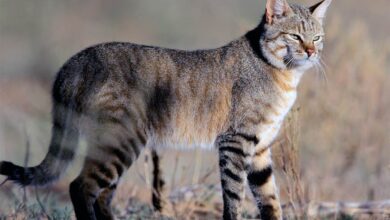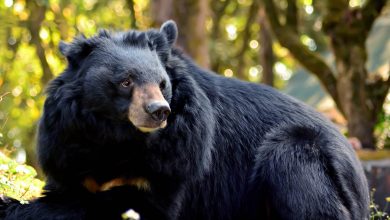Tapirs (Tapirus) – eclectic animals
While some people think that tapirs look a bit like pigs with trunks, they are actually more closely related to horses and rhinoceros. This eclectic lineage dates back to antiquity – just like the tapir itself, although scientists believe that these animals have changed over time, but only slightly.
Classification
- Kingdom: Animalia
- Phylum: Chordata
- Class: Mammalia
- Order: Perissodactyla
- Family: Tapiridae
- Genus: Tapirus
- Species
- Baird’s tapir (Tapirus bairdii)
- Malayan tapir (Tapirus indicus)
- Little black tapir (Tapirus kabomani) (disputed)
- Mountain tapir (Tapirus pinchaque)
- South American tapir (Tapirus terrestris)
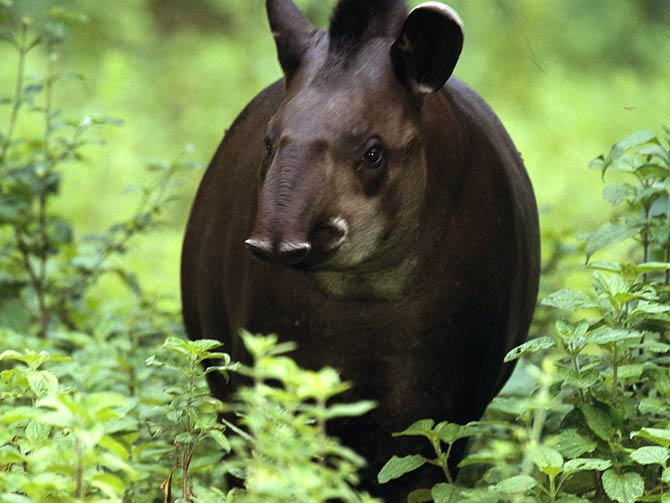
Species and distribution
There are still five species of tapirs in the world, but all of them are classified as highly or very highly endangered species. Little black tapir (Tapirus kabomani) was discovered only in 2013.
Kabomani tapir, little black tapir (Tapirus kabomani)
Discovered only in 2013. It is the smallest of the living tapirs, it is found in South America.
Baird’s tapir, Central American tapir (Tapirus bairdii)
It lives in Ecuador, Colombia and South Mexico; is one of four species of these animals found in South America.
Mountain tapir, Andean tapir, woolly tapir (Tapirus pinchaque)
It is a small species of tapir and is the only one that can inhabit areas outside tropical forests. You can meet it in the Andes in Ecuador and Colombia. There are also voices about the presence of a population in northwestern Peru. Its Latin name Tapirus pinchaque comes from a fantastic creature that is supposed to live among the mountains.
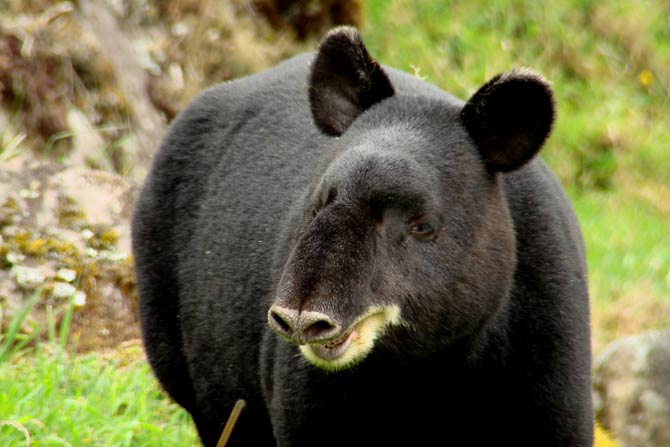
South American tapir, Brazilian tapir, Amazonian tapir, maned tapir, lowland tapir (Tapirus terrestris)
It is a very common species in the Amazon rainforest. Its range covers areas from Venezuela and Colombia, through Guyana, northern Brazil, Argentina, Paraguay to Bolivia, Peru and Ecuador in the west.
Malayan tapir, Asian tapir, Asiatic tapir, Oriental tapir, Indian tapir, piebald tapir (Tapirus indicus)
The only species to be found outside of South America. It lives in tropical rainforests of Southeast Asia, i.e. Cambodia, Indonesia, Laos, Malaysia, Myanmar (Burma), Thailand and Vietnam.
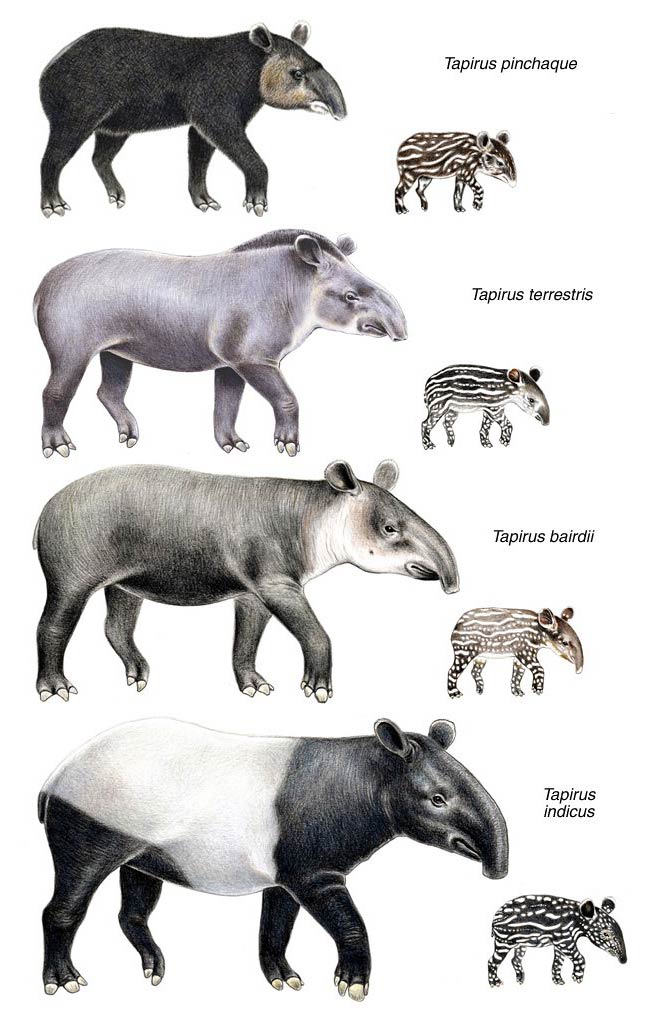
In addition, there were also 16 extinct species
- Tapirus augustus
- Tapirus californicus
- Tapirus copei
- Tapirus cristatellus
- Tapirus greslebini
- Tapirus johnsoni
- Tapirus lundeliusi
- Tapirus merriami
- Tapirus mesopotamicus
- Tapirus oliverasi
- Tapirus polkensis
- Tapirus rioplatensis
- Tapirus rondoniensis
- Tapirus tarijensis
- Tapirus veroensis
- Tapirus webbi
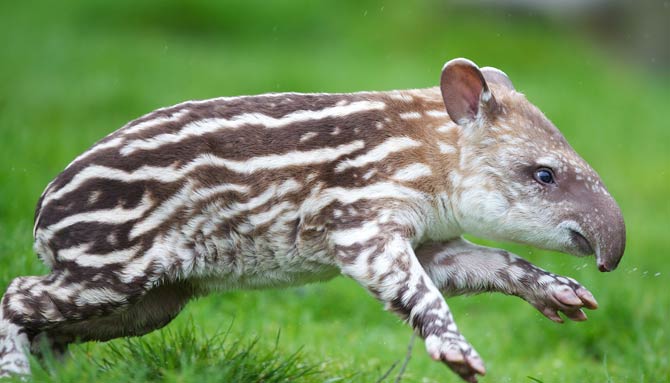
Characteristics
The most characteristic part of the tapir’s body is the small proboscis that has formed from the nose and upper lip. It is a very flexible structure – it consists almost entirely of soft tissues, not bone – that can move easily in all directions. It is thanks to her that the animal can catch leaves – otherwise they would be beyond its reach.
The length of the proboscis varies between species. The owners of the longest are Malayan tapirs (Tapirus indicus) and the shortest are lowland tapirs (Tapirus terrestris).
All species of tapir are similar in structure. Their legs end with flat toes – four on the front legs and three on the hind legs. Thanks to them, they can easily navigate on muddy and soft ground. The rumps of tapirs are prominent and rounded with a short tail.
The tapir’s coat is short and coarse, only the Mountain tapir has a more woolly cover, reaching a length of 3.5 centimeters. In species found on the South American continent, it varies in color from red-brown, through gray to almost black. The exception is Malayan tapir, which is black and white. The fair hair creates a kind of saddle on its body.
Young tapirs of all species have stripes that facilitate their camouflage.
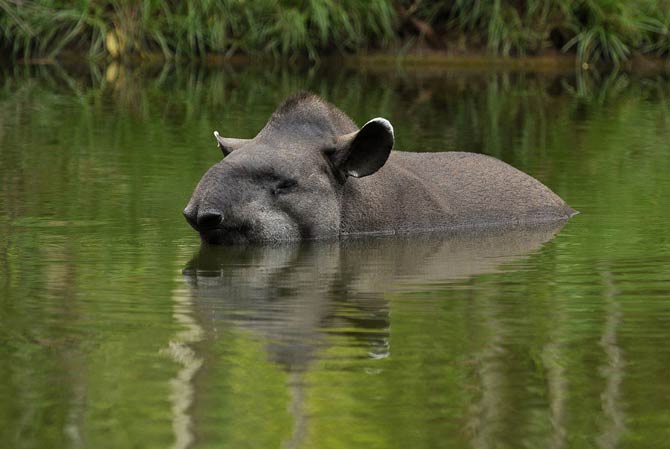
The senses
Tapirs have brown eyes often with a bluish tinge. This is common in Malayan tapir and has been identified as corneal opacity. Most likely, they are caused by overexposure to light or trauma. Tapir, however, has a very good sense of smell and hearing, which compensates for his deficiencies in the sense of sight.
Diet
Tapirs are herbivores and can eat up to 40 kg of food in one day. Their diet consists mainly of fruit and young leaves.
Behavior
Tapirs live in a very warm climate, which is why they spend a lot of time around water reservoirs, in which they like to dive. Thanks to this, they cool their body and get rid of parasites. Lush vegetation, usually surrounded by rivers, protects them from predators.
Tapirs – to cool their body – very often roll in mud. Tapirs are very good swimmers.
These animals lead mainly nocturnal lifestyle – the exception is Mountain tapir, which is active during the day. Tapirs – with the exception of mothers and their young – are loners.

Reproduction and development
Young tapirs reach sexual maturity at about 3-5 years of age, with females maturing faster than males. Under good environmental conditions, a healthy female can reproduce every 2 years. The period of pregnancy lasts 13 months, and usually one young is born.
The lifespan of a tapir – both in the wild and in captivity – is approximately 25-30 years.
Threats
Adult tapirs have several natural enemies, such as jaguars, crocodiles, anacondas, and tigers. Thick skin on the back and neck helps them protect themselves from their attacks. Despite their relatively high weight and massive build, tapirs can also escape quickly.
Excessive hunting – mainly for meat and skins – has drastically reduced the tapir population. Currently, all five species are threatened with extinction.
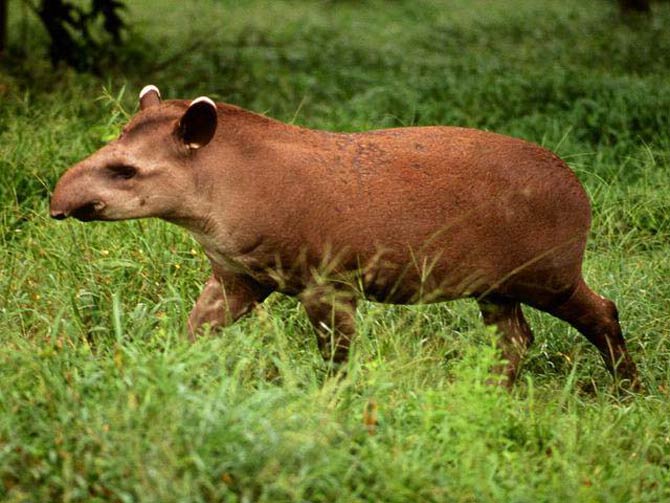
Data / dimensions
The smallest of the tapirs is the kabomani tapir, and the largest of the species inhabiting South America is Baird’s tapir. However, animals have very similar proportions
Kabomani tapir, little black tapir (Tapirus kabomani)
- Body length: about 130 cm (51.2 in)
- Height at the withers: 90 cm (35.4 in)
- Weight: 110 kg (242.5 lb)
Baird’s tapir, Central American tapir (Tapirus bairdii)
- Body Length: About 2 m (6.6 ft)
- Height at the withers: up to 1.2 m (3.9 ft)
- Tail length: 7 to 13 cm (2.8 – 5.1 in)
- Weight: 150 to 400 kg (331 – 882 lb)
South American tapir, Brazilian tapir, Amazonian tapir, maned tapir, lowland tapir (Tapirus terrestris)
- Body length: up to 1.8 to 2.5 m (5.9 – 8.2 ft)
- Height at the withers: 77 to 108 cm (2.3 – 3.5 ft)
- The length of the tail: 5 to 10 cm (2.0 – 3.9 in)
- Weight: 150 to 320 kg (331 – 706 lb); typically around 225 kg (496 lb)
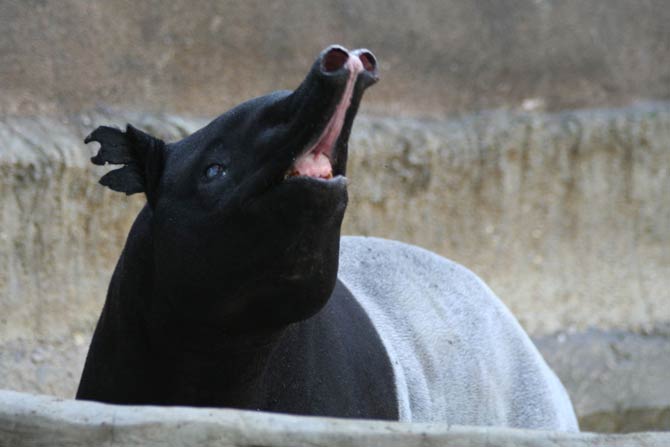
Mountain tapir, Andean tapir, woolly tapir (Tapirus pinchaque)
- Body Length: About 1.8 m (5.9 ft)
- Height at the withers: 77 to 100 cm (2.3 – 3.3 ft)
- Weight: from 150 to 225 kk (331 – 496 lb); females from 25 to even 100 kg (55 to 220 lb) heavier than the males
Malayan tapir, Asian tapir, Asiatic tapir, Oriental tapir, Indian tapir, piebald tapir (Tapirus indicus)
- Body length: 1.8 to 2.4 m (5.9 – 7.9 ft)
- Height at the withers: from 90 to 107 cm (2.95 – 3.5 ft)
- The length of the tail: 5 to 10 cm (2.0 – 3.9 in)
- Weight: 250 to 320 kg (551 – 706 lb); record 363 kg (800 lb)
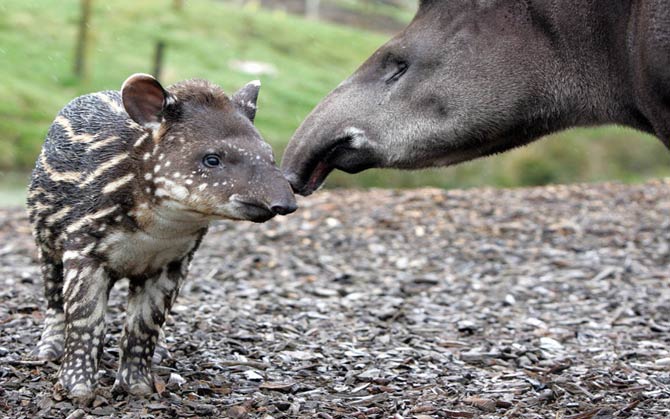
Tapir – interesting facts
- Hybrids of Baird’s tapir and South American tapir were created at the San Francisco Zoo in 1970.
- Tapirs are usually very calm, but when provoked they can attack humans.
- The largest wild tapir in the world has been found in Southeast Asia. It was a Malayan tapir weighing 363 kilograms (800 lb).

Recommended
- Reindeer, Caribou
- Tufted deer
- Jane Goodall
- Dian Fossey
- Jim Corbett
- Gorillas
- Gorilla – the biggest ape
- Chimpanzee
- Orangutan – a forest man
- Bili apes – lion killers














